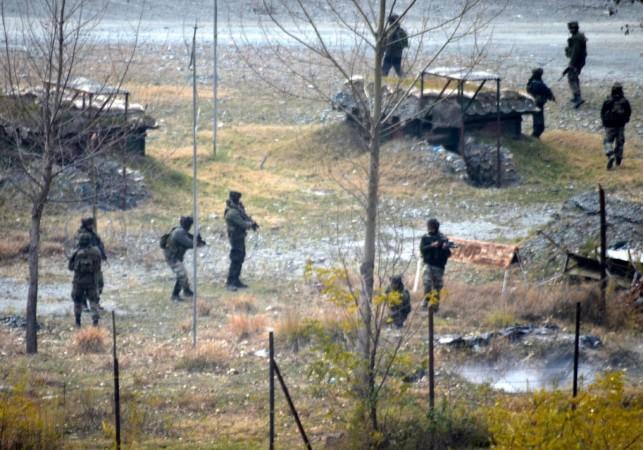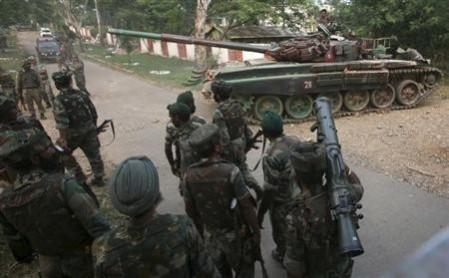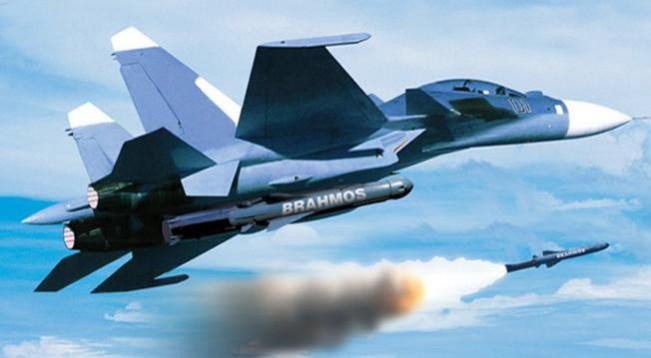
The Indian Army's proposed shift of focus to regular field formations, trimming its involvement in non-core organizations, is aimed at giving its 'Cold Start' doctrine more teeth, enabling lightning strikes deep inside enemy territory, reports suggest. Though the proposal was made some time back, it has significance in view of developments in Jammu and Kashmir and deterioration of diplomatic relations with Pakistan.
Tension has been reigning high in the Valley and across the Line of Control (LoC) with Pakistan-Occupied Kashmir (POK) and the international border following the abrogation of Articles 370 and 35A in part removing the area's special constitutional status and bifurcating the state into Union Territories of Jammu & Kashmir and Ladakh, amid hostile statements from the government in Islamabad.
The general perception in the defence circles is that the presence of IBGs would have boosted the armed forces' confidence when the Indian Air Force (IAF) planes carried out surgical strikes on Jaish-e-Mohammed (JeM) terrorist camps deep inside the Pakistani territory on Balakot in February to avenge the Pulwama terrorist strike. The IAF scrambled a posse of planes including Mirage 2000, Sukhois (Su-30MKI) and MiG-21 Bison to defend the skies against intruding Pakistan Air Force (PAF) formation including F-16s.

The defence establishment has begun raising the integrated battle groups (IBG) capable of rapid mobilization and decisive action even on the foreign territory as part of its modernisation plan, according to the media reports. The new self-contained IBGs, centred around T-90S main-battle tanks (MBT), with a mix of infantry, artillery, air defence, signals and engineering corp personnel, will be at the command of Major Generals, a report on the Times of India website says. The plan is to raise two to three IBGs for the plains of Jammu, Punjab and Rajasthan for the Pakistan border by October-November, while those meant for China will come up later under the new 17 Mountain Strike Corps, the report said.
By reducing the manpower by about 27,000 personnel in organizations engaged in non-core operations, the establishment hopes to save about Rs 1,600 crore, which could be deployed in the modernisation programme, the report says. A study has termed Indian Army a top-heavy force of 12.5 lakh personnel struggling to rein in skyrocketing revenue expenditure and salary bill.
Indian Army has about 1,75,000 officers and soldiers deployed in organizations ranging from the Military Engineer Services, National Cadet Corps, Border Roads Organization, Territorial Army and Sainik Schools to the operationally-crucial Assam Rifles, Rashtriya Rifles and Strategic Forces Command, all of which do not come under the regular standing Army, according to the report. "A new comprehensive study, chaired by the director-general (perspective planning) at the Army headquarters, has recommended the reduction of Army manpower in such organizations by about 27,000 personnel as well as their restructuring for better efficiency and effectiveness," the report said citing an unidentified source.

A proposal aims at withdrawing soldiers deployed in 'non-core activities' in such establishments called 'composition table-2' (CT-2) organizations. It is being forwarded to the defence ministry for approval. The study was conducted in an effort to implement wider reforms that will transform Indian Army into a lean and rapidly-deployable and operationally versatile force. According to indications, the army may have to slash manpower by around 1.5 lakh personnel over the next six-to-seven years to save revenue spend of around Rs 6,000-7,000 crore annually.
Media reports earlier suggested that IA had conducted four studies on force reorganization and optimization, flattening headquarters at various levels, cadre review and terms of engagement for officers and jawans. The government will soon issue a "general sanction letter" (GSL) triggering reforms to restructure and downsize the army headquarters in New Delhi. The measures include the relocation of 229 officers on staff duties to frontline operational posts and creation of a new post of deputy chief (strategy) for military operations, intelligence, logistics and strategic planning, among others.









!['Had denied Housefull franchise as they wanted me to wear a bikini': Tia Bajpai on turning down bold scripts [Exclusive]](https://data1.ibtimes.co.in/en/full/806605/had-denied-housefull-franchise-they-wanted-me-wear-bikini-tia-bajpai-turning-down-bold.png?w=220&h=138)



